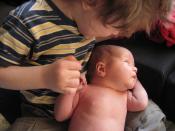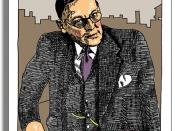Dear Erica,
How are you? Don't stress too much on your English exam on you'll begin to grow a 'bald spot' (if you haven't realised, that phrase is from Prufrock). Well, let me assist you by revealing my feelings and analysis on TS Eliot's issues and concerns. Since I've only studied 'The Love Song of J. Alfred Prufrock', 'Portrait of a Lady', 'Rhapsody on a Windy Night' and 'Preludes', I'll be relating my explanation to those poems.
The human conditions that Eliot represents are trivial, struggle, pessimism, depersonalisation, despair and desolation. His views of women are misogynistic and being involved in sordid activities.
Eliot's poems deal with the psychological impasse of the sensitive person from whom life has been withheld. Both 'Prufrock' and 'Portrait of a Lady' depict self-conscious, philosophical characters who are unable to act and fear the chance of acting. As portrayed in 'Prufrock' the character is hesitant yet questions actions that are risky and difficult: "Do I dare/ Disturb the universe?" He is unable to act through the limitations of his inner self but is equally limited by the 'social' standards and public views of life.
Prufrock struggles with the concept of asking the "overwhelming question". This may refer to one of the women in the room whom he is unable to ask to marry him. The male observer in 'Portrait of a Lady' also illustrates his inaction, apathy and numbness towards the older lady with whom he has a detached relationship. The imagery of the fog that is personified in 'Prufrock' suggests the vacillation of humans deciding to act. The fog merely lingers outside and eventually 'curled about the house, and fell asleep'. Both characters are confronted by the difficulty of action rather than its unpleasantness. 'Prufrock' and 'Portrait of a lady' conveys...


